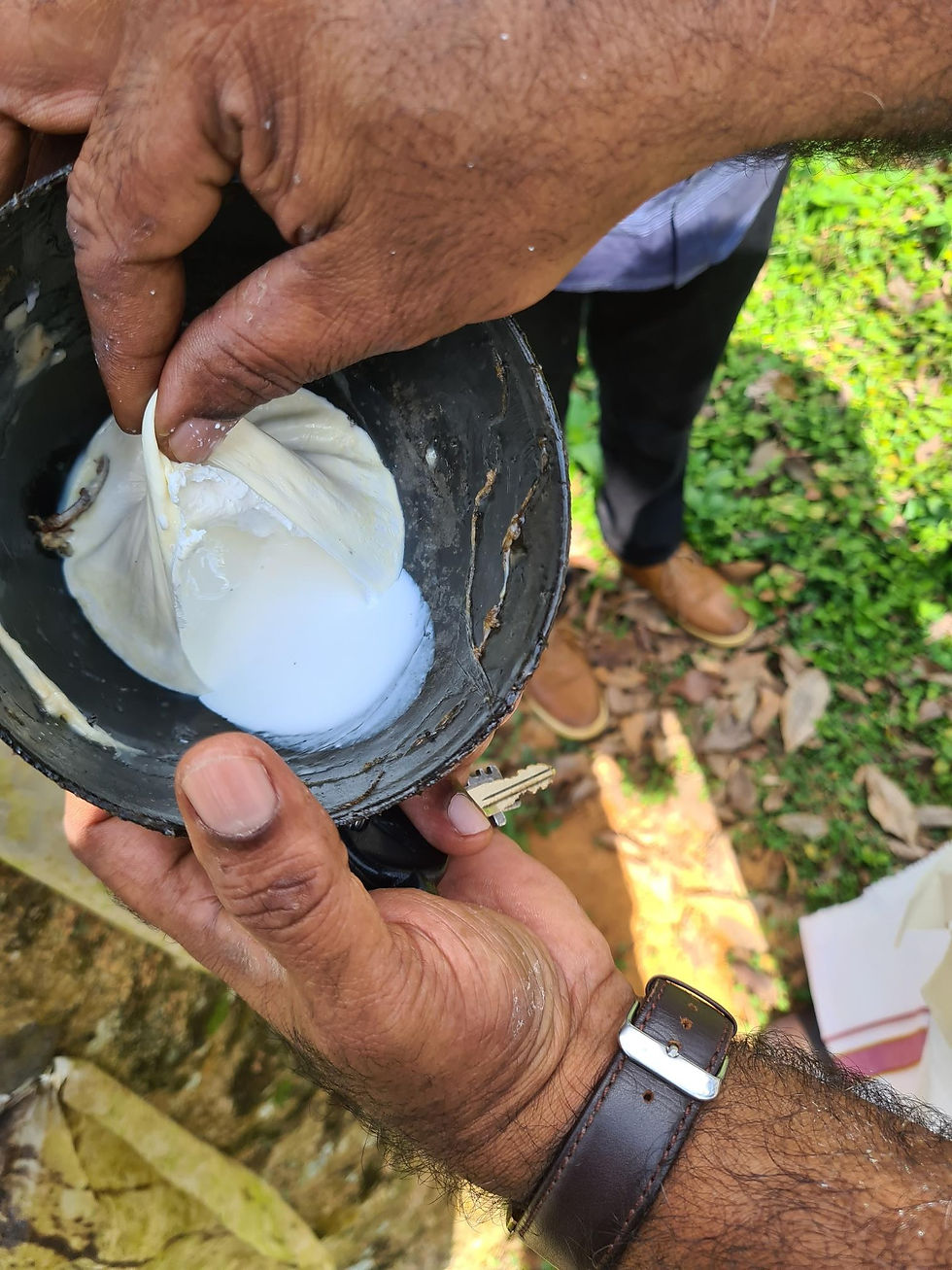The Bounce of Nature: Exploring the World of Natural Rubber
- Reliant Rubber
- Jul 10, 2024
- 2 min read
Updated: Jan 31

At Reliant Rubber, we priorities our impact on the environment. That's why most of our rubber flooring and matting solutions are made from a well-balanced combination of natural and recycled rubber.
In an era where sustainability is more than a buzzword, natural rubber is a testament to nature's ingenuity and resilience. Natural rubber is a versatile material with a rich history and a promising future, obtained from the latex sap of the Hevea Brasiliense tree. Let's explore the fascinating journey of natural rubber, from its origins in tropical forests to its various applications in our daily lives.
The Origins of Natural Rubber
Natural rubber, known as latex, is primarily sourced from the rubber tree Hevea Brasiliense. Native to the Amazon rainforest, these trees produce a milky sap that, when processed, transforms into the elastic material we recognise as rubber—tapping rubber trees to harvest latex dates back centuries, with indigenous peoples in South America using it for waterproofing and making bouncy balls

The Harvesting Process
The process of harvesting natural rubber involves tapping the rubber tree to allow latex to flow out without harming the tree. This is done by making a series of shallow cuts in the bark, which allows the latex to flow into a collection cup. The collected latex is then processed to remove impurities, resulting in natural rubber.
Environmental and Economic Impact
Natural rubber is more than just an industrial material; it plays a significant role in the economies of many developing countries, particularly in Southeast Asia. Countries like Thailand, Indonesia, and Malaysia are leading natural rubber producers, providing livelihoods for millions of smallholder farmers. Environmentally, rubber plantations can contribute to carbon sequestration and provide habitats for wildlife if managed sustainably.
Uses of Natural Rubber
Automotive Industry
Natural rubber is crucial in the automotive industry, especially for tyres, due to its elasticity, durability, and ability to withstand diverse weather conditions for safe transportation.
Medical Field
Natural rubber is used to manufacture gloves, catheters, and various medical devices in the medical field. Its hypoallergenic properties and flexibility are ideal for applications requiring sterile and precise conditions.
Consumer Goods
Natural rubber is indispensable in producing a wide range of consumer goods owing to its exceptional elasticity and resilience. Its unique properties make it an essential material for manufacturing tyres, footwear, adhesives, and various industrial products.
Sustainable Alternatives
In recent years, natural rubber has gained attention as a sustainable alternative to synthetic rubber derived from petroleum. As industries and consumers become more environmentally conscious, the demand for natural rubber is poised to grow, driving innovation in sustainable harvesting and processing techniques.

Challenges and Future Prospects
The natural rubber industry faces challenges such as disease outbreaks, fluctuating market prices, and the need for sustainable farming practices. However, advancements in biotechnology and sustainable agriculture promise to address these issues. Researchers are working to enhance rubber tree resilience and productivity while minimising environmental impact.
Conclusion
Natural rubber is a remarkable gift from nature that has woven itself into the fabric of modern life. As we seek sustainable and eco-friendly alternatives in various industries, natural rubber is a prime example of how nature's resources can be harnessed responsibly. By supporting sustainable rubber production and innovation, we can ensure this versatile material continues to bounce into our future.

Comments